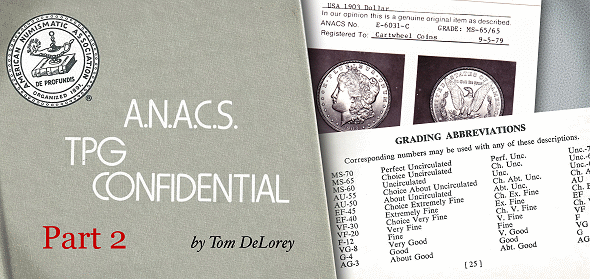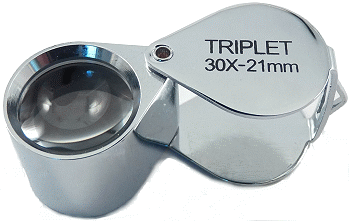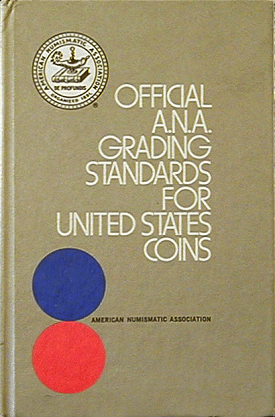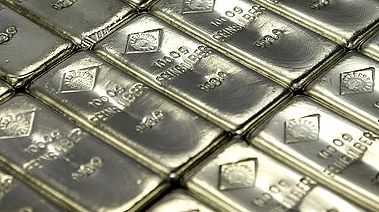
By Tom DeLorey for CoinWeek …..
Part I | Part II
After calling to let me know that he was coming to Sidney, Ohio to meet with Coin World management the next day, Ed Rochette flew to Dayton and called one of the Amos family from there to let them know why he was coming.
He was told that he wasn’t welcome in the building!
Of course, I didn’t know this. Around 10:30 am I saw the editor rush out of the building–I guessed she was going to get Rochette. When she didn’t return within an hour, I went to lunch with other staffers.
When we came back to the office, no Rochette, and the editor had her door closed (I sent a spy past her window to verify that Rochette wasn’t in there, but I didn’t know if he was off with the Amoses or what.) I waited for the other shoe to drop, and finally about 2 pm the librarian came into my office and wished me luck. I said thank you, and asked her how she’d heard. She said that the editor of the company’s stamp publication had seen our editor having lunch with Rochette at the Holiday Inn and put two and two together.
I finally got the chance to speak with our editor, and she asked me if I’d met with Rochette at the Holiday Inn. I said no, I had eaten somewhere else. She said that she’d left him there assuming that I was going over there, too–which we normally did, but that day I’d avoided doing so as not to interfere with their presumed meeting. I later found out that the chief executive officer of the American Numismatic Association had been left sitting there by himself for two hours before giving up and returning to Dayton, never having had the chance to formally offer me the job. Not the friendly “parting of the ways” that the ANA had hoped for.
 I gave notice and drove to Colorado Springs, hauling all my worldly possessions (mostly books) in a 10-foot trailer. Once settled in, I began intensive training in counterfeit detection, and began plans for the grading service.
I gave notice and drove to Colorado Springs, hauling all my worldly possessions (mostly books) in a 10-foot trailer. Once settled in, I began intensive training in counterfeit detection, and began plans for the grading service.
I thought it would be good to do a test run wherein any major dealer willing to participate would send us 10 coins in numbered but ungraded holders, with their number-coded grades sealed in an envelope. As I recall, we got a broad selection of classic U.S. type coins, including gold. Using a small worksheet for each coin, John Hunter, Ed Fleischmann and I graded each coin according to the ANA grading guide. We discussed any differences of opinion in order to arrive at an agreed-upon grade, and when we were finished with each lot we opened the envelope to see the dealer’s grades.
The results were a bit disturbing.
Though we generally agreed with the dealers in the circulated grades and the post-Civil War Mint State grades, I discovered that most of the dealers discounted table rub on high-grade early coins (such as bust halves and bust dollars) in direct contradiction to the ANA guide. Imagine one of these coins with original luster in the fields and very few contact marks (like you see when coins bang against each other in circulation), but having definite breaks in the luster on the high points such as might be caused by repeatedly dragging the coins towards a person sitting at a table counting the coins. Picture yourself raking in poker chips and stacking them.
It’s presumed that such coins, especially the halves, were kept in original bags (or kegs, or whatever) as monetary reserves and just dumped out on a counting table every time the coins were transferred from one owner to another. However, if the definition of “Uncirculated” is “a piece (that) has no wear of any kind”–as the first edition ANA grading guide defined it–then such coins are literally not “Uncirculated.”
 Being a literalist who was trying to grade “by the book”, my solution was to create the grade “AU-58” to refer to a coin with the general appearance of an Uncirculated piece but demonstrable wear on the high points. Today, such early coins are routinely graded as MS-60 or better by the TPGs; I’ve seen some graded as high as MS-63.
Being a literalist who was trying to grade “by the book”, my solution was to create the grade “AU-58” to refer to a coin with the general appearance of an Uncirculated piece but demonstrable wear on the high points. Today, such early coins are routinely graded as MS-60 or better by the TPGs; I’ve seen some graded as high as MS-63.
Among the coins that were legitimately in Mint State condition, I discovered that the book’s three MS grades–60, 65 and 70–were woefully inadequate. I presumed that we’d rarely use the 70 grade (I think we used it three times while I was there, and only on Proof coins), so that left us with only two functional Mint State grades. As a collector of silver dollar die varieties who’d gone through many a “BU” roll, I knew that the vast universe of Mint State coins could not be divided into a mere two grades. So I invented MS-63 and MS-67 as well.
I chose “63” because I wanted something that was more than halfway between “60” and “65”, to emphasize that this was a significant improvement over 60 and thus worthy of its own grade. After all, it would be an injustice to force a seller to call such a coin an MS-60.
I chose “67” partly because it was the same number of points above 65 as 63 was below it, and the symmetry of that spacing appealed to me. I also thought it had a fair chance of being achieved occasionally in the universe of collectible coins we expected to be handling; none of us foresaw the glut of modern coins being graded where an “MS-67” is considered a reject.
I presented the results of the test gradings to Rochette, along with my recommendations that we add AU-58, MS-63 and MS-67. I also presented an alternative proposal that the Mint State range be altered to MS-60, MS-70, MS-80, MS-90 and MS-100, with those numbers being equivalent to my 60, 63, 65, 67 and 70. In my mind this would give us the flexibility for future expansion, hopefully at the intermediate “5” levels and no finer. I also suggested that the grading book be revised to reflect either my proposed additions or the 60-100 scale.
Having seen what it took to get the first edition of the grading guide produced, and knowing that the ANA had already sold a number of them (with many more in inventory), Rochette was reluctant to make them immediately obsolete by switching to the MS-60 to 100 scale. He told me to go ahead with the AU-58, MS-63 and MS-67 additions since they could be easily incorporated into a future edition.
With this, we announced that we’d start accepting coins for grading on March 1, 1979.
 Meanwhile, out in the real world, the coin business was going nuts. Inflation was high, and precious metals were skyrocketing as the Hunt Brothers attempted to corner the silver market. Collectors and hoarders who cashed in their common silver were making huge profits that they then plowed back into collector coins–as did the dealers, who bought the silver and sent it to the refineries. It was the stock market of 1928 all over again, and collector coins could only go up, up, up!
Meanwhile, out in the real world, the coin business was going nuts. Inflation was high, and precious metals were skyrocketing as the Hunt Brothers attempted to corner the silver market. Collectors and hoarders who cashed in their common silver were making huge profits that they then plowed back into collector coins–as did the dealers, who bought the silver and sent it to the refineries. It was the stock market of 1928 all over again, and collector coins could only go up, up, up!
Coins started coming in for grading before the start date, and we processed the first batch on February 28. They kept coming. We very quickly blew through our 100-coin-a-month target, and it wasn’t long before we were receiving a thousand coins a month and then multiple thousands a month. We kept adding staff.
Being a non-profit organization sheltered from the real world of coin dealing, nobody at the ANA had foreseen that the dealer market would embrace third-party grading as a marketing tool for selling coins to the public. If we did receive coins from a specific collector attempting to resolve a dispute with a specific seller, it was lost in the tonnage of double row boxes of BU Morgan dollars sent in by hopeful dealers. After all, if the coin was pre-graded, there couldn’t be a dispute afterwards, right?
Eventually we were receiving over 10,000 coins a month, and falling behind no matter how many authenticator/graders we could hire and train. I remember two memorable months where I rallied the troops and we managed, with unpaid overtime, to grade 10,000 coins each month before dropping back to normal (perhaps 8,000 per month), exhausted and eye-strained by the effort.
We kept trying to hire and train more authenticators, while expanding the photographic and clerical departments as well. At one time, we had over 60 people working for ANACS, including a night shift in the photography department. The large addition to the ANA Headquarters building in the early 1980s was put on to accommodate our staff, and completely paid for by our net operating profit.
Eventually things changed as the coin market crashed about a year after the Hunt Brothers bubble burst. Submissions fell, and with our large overhead we went from a net operating profit of about $1.2 million in one fiscal year to a net operating loss of about $600K the following fiscal year. Unfortunately, the ANA, anxious to protect its non-profit status, had already found ways to spend the profit on other things. Some of these were necessary, such as the addition, while others were just damn frivolous.
 As Senior Authenticator by then, I noticed another serious problem. Before the crash, market grading had gotten very loose, and I was constantly being barraged with complaints that we were grading too strictly. Our textbook MS-65 was selling as an MS-66 (in use by then, along with MS-64) in the marketplace.
As Senior Authenticator by then, I noticed another serious problem. Before the crash, market grading had gotten very loose, and I was constantly being barraged with complaints that we were grading too strictly. Our textbook MS-65 was selling as an MS-66 (in use by then, along with MS-64) in the marketplace.
After the crash, market grading got incredibly strict, as dealers refused to buy coins back at the grades they had sold them. I don’t think there was any conspiracy to do so, but this appeared to be an attempt to justify the now-artificially high prices that continued to show up in price guides. These prices, which now required a much nicer coin than before, helped hide how far the coin market had truly fallen. I’ve heard estimates that many rare coins lost 70% of their pre-crash value.
Our textbook MS-65 was now an MS-64 or even an MS-63 in the new bear market, and it took a bull market MS-66 or even MS-67 to get a bear market MS-65 worth the money listed in the pricing guides. The same people who’d previously complained that we were grading too strictly were now complaining that we were grading too loosely, while as far as I could tell our grading hadn’t changed.
A different problem was the persistent rumor that ANACS certificates were being counterfeited. This was combined with credible (though scarce) reports that coins were being sold with a genuine certificate issued for another coin. I only ever saw two counterfeit photo certificates, both crude, and thought that the problem could be solved by promoting greater awareness of genuine certificate characteristics.
As for switching, I thought that other numismatists should be able to match up the inevitable markings found on less than perfect coins with our excellent photographs. I resisted the calls for the encapsulation of coins–as eventually happened with PCGS in 1986 and NGC in 1987–because I thought that this would make the coins harder to see and, quite frankly, make people lazy about looking at their coins. People might start buying the plastic, not the coin.
Decide for yourselves if that’s the case today.
I left ANACS in 1984 over a difference of opinion with management. ANACS–the first third-party grading service–was a great learning experience, and I wouldn’t have missed it for the world. I got to handle a great many rarities (such as two 1804 dollars and the unique 1870-S half dime) in the flesh, without a hard plastic condom around them.
Who among us outside a grading room will ever have that opportunity again?
* * *





Nice read. I like the plastic condom remark. There are pluses and minuses about the plastic slabs rampant in the hobby. I think they are mostly a positive development, but I still haven’t paid to have a coin graded. I’d rather spend it on a coin (graded already or raw).
Very informative piece,thanks!